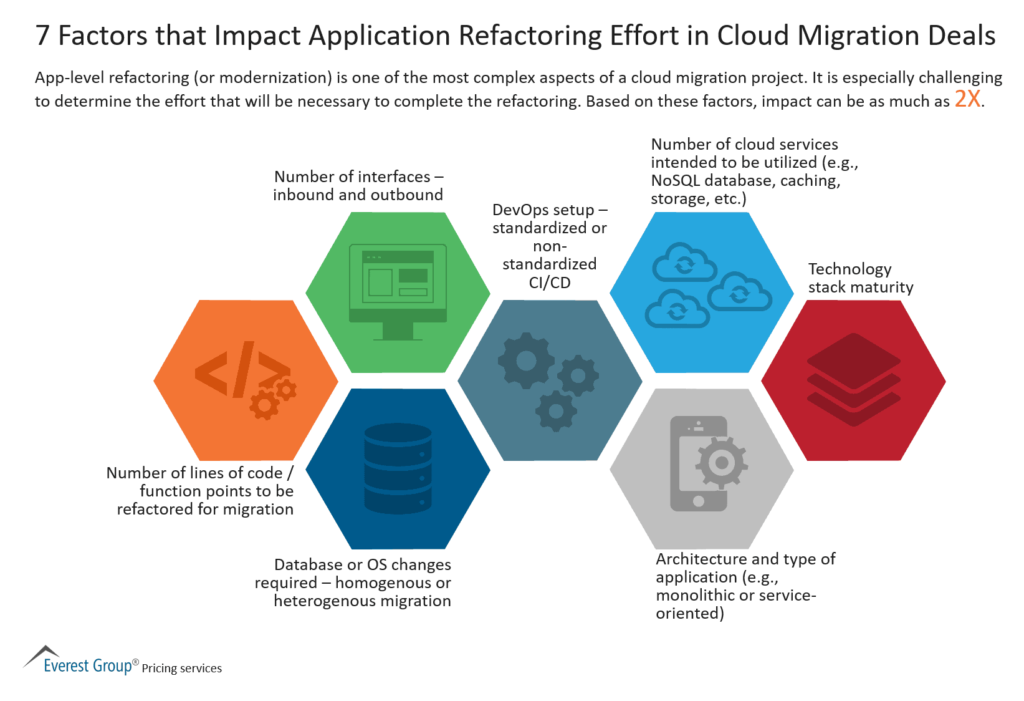The shift towards cloud technology has been gaining momentum in recent years, with more and more businesses moving towards the cloud. However, cloud migration is not always a smooth process, and many organizations struggle to successfully make the transition. In fact, research indicates that a significant number of cloud migration projects fail to meet their objectives. But why do cloud migrations fail? What are the common pitfalls that organizations need to avoid?
One of the key reasons why cloud migrations fail is due to the lack of planning and preparation. Many organizations underestimate the complexity of the migration process and fail to properly assess the risks and challenges involved. This leads to poor decision-making, inadequate resource allocation, and a lack of clear goals and timelines. In addition, many organizations fail to properly train their staff on how to use the new cloud infrastructure, which can lead to confusion and inefficiencies. All of these factors can contribute to a failed migration project, resulting in significant financial losses and damage to the organization’s reputation.

Why Cloud Migrations Fail?
Cloud migrations are complex operations that involve moving an organization’s systems and data to the cloud. Despite the potential benefits, many cloud migrations fail due to various issues. This article will discuss the various challenges associated with cloud migrations and how they can be avoided.
Poor Planning and Preparation
One of the most common reasons for cloud migration failure is poor planning and preparation. Without proper planning and preparation, organizations can run into unexpected technical and operational issues that can delay or derail the migration process. It is important to conduct a thorough analysis of the existing environment and the target cloud platform before beginning the migration process. This will help ensure that the right resources are in place and that the migration process is as smooth as possible.
In addition to planning, organizations should ensure that they have the right tools and technologies in place to support the migration process. This includes ensuring that the right hardware and software are in place to support the cloud environment and that the necessary security measures are in place. Organizations should also ensure that they have the right personnel in place to manage the migration process, such as a cloud migration specialist or a project manager.
Inadequate Testing
Another common reason for cloud migration failure is inadequate testing. Organizations should ensure that their applications and data are tested thoroughly before being migrated to the cloud. This includes testing for compatibility, performance, scalability, security, and reliability. It is also important to ensure that any automated processes that are used in the migration process are tested to ensure that they function properly.
Organizations should also ensure that they have the right processes and procedures in place to validate the migration process. This includes ensuring that the data is accurately migrated and that any applications and services that are used in the migration process are properly configured. Additionally, organizations should ensure that they have the right personnel in place to monitor and troubleshoot any issues that arise during the migration process.
Insufficient Resources
Cloud migrations often require significant resources, including personnel, hardware, and software. Organizations should ensure that they have the right resources in place to support the migration process. This includes ensuring that they have the right personnel in place to manage and execute the migration process and that they have the right hardware and software in place to support the cloud environment. Additionally, organizations should ensure that they have the right processes and procedures in place to ensure that the migration process is successful.
Organizations should also ensure that they have the necessary budget in place to support the migration process. This includes ensuring that they have the right personnel in place to manage and execute the migration process and that they have the necessary hardware and software resources in place to support the cloud environment. Additionally, organizations should ensure that they have the right processes and procedures in place to ensure that the migration process is successful.
Lack of Communication
Poor communication can also lead to cloud migration failure. Organizations should ensure that they have the right personnel in place to manage and execute the migration process, and that they have the right processes and procedures in place to ensure that the migration process is successful. Additionally, organizations should ensure that they have the right communication channels in place to keep stakeholders informed of the progress of the migration process. This includes ensuring that stakeholders are regularly updated on the progress of the migration process and that any questions or issues are addressed in a timely manner.
Organizations should also ensure that they have the right processes and procedures in place to ensure that the migration process is successful. This includes ensuring that the right personnel are in place to manage and execute the migration process, and that the right tools and technologies are in place to support the cloud environment. Additionally, organizations should ensure that they have the right communication channels in place to keep stakeholders informed of the progress of the migration process.
Data Loss and Security Concerns
Data loss and security concerns are also common reasons for cloud migration failure. Organizations should ensure that the right security measures are in place to protect their data and that any data that is migrated is properly backed up. Organizations should also ensure that they have the right processes and procedures in place to ensure that any data that is lost during the migration process is properly recovered. In addition, organizations should ensure that they have the right security measures in place to protect their data from any malicious activity.
Organizations should also ensure that they have the right processes and procedures in place to ensure that the migration process is successful. This includes ensuring that the right personnel are in place to manage and execute the migration process, and that the right tools and technologies are in place to support the cloud environment. Additionally, organizations should ensure that they have the right security measures in place to protect their data from any malicious activity.
Poor Governance and Compliance
Poor governance and compliance can also lead to cloud migration failure. Organizations should ensure that they have the right processes and procedures in place to ensure that the migration process is successful. This includes ensuring that the right personnel are in place to manage and execute the migration process, and that the right tools and technologies are in place to support the cloud environment. Additionally, organizations should ensure that they have the right compliance measures in place to ensure that their data is secure and that their applications and services are compliant with any applicable laws and regulations.
Organizations should also ensure that they have the right personnel in place to manage and execute the migration process, and that they have the right tools and technologies in place to support the cloud environment. Additionally, organizations should ensure that they have the right processes and procedures in place to ensure that any compliance requirements are met. This includes ensuring that the right personnel are in place to manage and execute the migration process, and that the right tools and technologies are in place to support the cloud environment.
Frequently Asked Questions about Cloud Migration Failures
Cloud migration is a process of moving an existing application to the cloud, but it can be more complex than expected and sometimes fail. Here are some of the most commonly asked questions about cloud migrations and why they can fail.
What are the most common reasons for cloud migration failure?
The most common reasons for cloud migration failure are inadequate pre-migration planning, lack of adequate application architecture knowledge, and lack of resources. Pre-migration planning is essential for any successful cloud migration. It is important to have an understanding of the application architecture and to ensure that the application can be migrated with minimal disruption. Furthermore, it is important to have the right resources in place, such as cloud migration specialists, to ensure the migration is successful.
What are the risks of cloud migration failure?
The risks of cloud migration failure include a decrease in application performance, increased costs, and data loss. If the cloud migration is not properly planned and executed, there is a risk of decreased performance due to the application not being able to take full advantage of the cloud infrastructure. Additionally, there is a risk of increasing costs due to the migration taking longer than expected, or having to be re-done due to mistakes. Lastly, there is a risk of data loss due to incorrect configuration of the cloud environment.
How can I avoid cloud migration failure?
The best way to avoid cloud migration failure is to ensure that the migration is properly planned and executed. This includes understanding the application architecture, having the right resources in place, and ensuring that the cloud environment is properly configured. Additionally, it is important to have an experienced cloud migration specialist to help guide the migration process and ensure that it is successful.
What should I do if my cloud migration fails?
If your cloud migration fails, the best course of action is to immediately contact your cloud migration specialist for assistance. They will be able to analyze the situation and provide advice on how to proceed. Additionally, it is important to make sure that the cloud environment is properly reconfigured to avoid any further disruption.
What are the benefits of successful cloud migration?
Successful cloud migration can provide many benefits, such as increased scalability, improved performance, and cost savings. The cloud environment can provide the flexibility needed to easily scale up or down as needed. Additionally, the cloud environment can provide improved performance due to its ability to rapidly provision resources as needed. Lastly, cloud migration can result in cost savings due to the pay-as-you-go model of the cloud.

In conclusion, cloud migrations can be a complex and challenging process, and there are many reasons why they can fail. Organizations that fail to adequately plan and prepare for their cloud migrations, or that lack the necessary expertise and experience to successfully navigate the process, are at greater risk of encountering problems and setbacks. However, by taking a proactive approach, investing in the right resources, and working with experienced cloud migration professionals, organizations can overcome these challenges and achieve successful cloud migrations that deliver real business value.
Ultimately, the key to a successful cloud migration is a comprehensive and strategic approach that takes into account all aspects of the process, from planning and preparation to execution and ongoing management. By leveraging the right tools and techniques, and by working closely with internal and external stakeholders, organizations can achieve the benefits of cloud computing while avoiding the pitfalls that can lead to failure. With careful planning, execution, and ongoing management, cloud migrations can be a powerful tool for driving innovation, efficiency, and growth in today’s fast-paced and competitive business environment.



